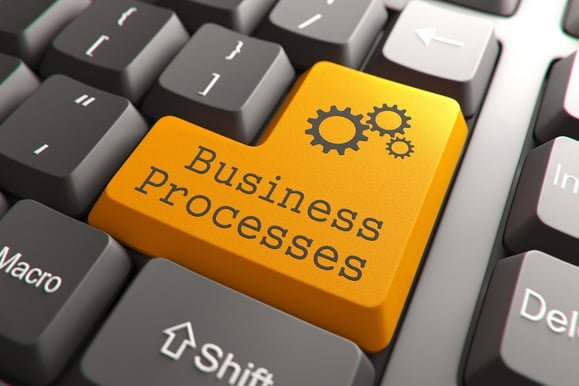Mapping Micro-Moments in the B2B Journey with AI
The meteoric rise of smartphones and tablets means that micro-moments are multiplying for B2B companies. According to data collected by Think with Google, consumers’ mobile searches for the “best” product have grown by 80%, and 50% expect to buy something as soon as they find what they’re looking for with their smartphone.
The demanding nature of modern buyers underscores the importance of mastering micro-moments. As a B2B seller, you can’t afford to drop the ball when folks are ready to place an order and should have an in-depth, data-driven understanding of the customer journey.
However, keeping up with every micro-moment in the B2B customer journey can be taxing. You probably can’t manually crunch data all day and may miss important moments while your attention is focused on bigger-picture problems. Fortunately, artificial intelligence (AI) is on hand to help solve your customer journey needs.
What Are Micro-Moments?

Micro-moments are generally defined as impulsive, intent-rich moments when consumers use smartphones or other readily available devices to make a purchase. They may happen after weeks of meticulous research or the moment after seeing an ad online. From a business perspective, it’s your job to remove any roadblocks and let the customer purchase your goods or services.
Seen in this light, micro-moments may sound random. However, in reality, they usually happen after B2B buyers have been exposed to your brand several times. Think echoes this sentiment with Google data reported in a paper titled “Micro-Moments: Your Guide to Winning the Shift to Mobile”, which found that:
- 69% of online customers say the quality and timing of branded messaging influenced their perception of the business.
- 91% looked up products or services while working on other tasks.
- 82% consult their phones when looking to buy a particular product in a store.
These same insights apply to the B2B journey. B2B buyers may be more intentional when purchasing a product or service but, ultimately, will still be swayed by timely, relevant marketing. You can increase your chances of capturing the attention of B2B buyers by leaning on AI’s predictive analytics.
Predictive Analytics

Artificial intelligence is changing the way that B2B market research works. Advances at the intersection of data science and AI in business intelligence enable companies to create a more memorable experience for customers and improve the buyer’s journey. AI tools, powered by machine learning algorithms, predict user behavior and identify the factors that are most likely to convince a customer to convert.
Leveraging predictive analytics correctly can help you build relationships and improve your brand reputation, too. AI-generated insights make it easier to connect with business buyers and offer insights. These insights help you nurture hot leads and increase your chances of scoring repeat purchases.
An effective predictive analytics program can help you identify customers who are approaching the abandonment stage. This is crucial if you sell a subscription-based service and can’t afford to lose high-paying clients. An AI-powered predictive analytics program can help you step in at the crucial moment to offer personalized deals and product recommendations or answer timely FAQs.
Improving Your Process

The B2B world is highly competitive. This means you must embrace a continuous improvement culture to stay ahead of your rivals. AI can help you step up your game and capture the attention of buyers during micro-moments by improving your process visualization.
Effective process visualization happens when you use graphics like maps or flow charts to visually represent the micro-moments that B2B buyers experience during their customer journey. By visualizing the process flow, you can identify inefficiencies and optimize critical touchpoints. This approach is especially valuable when you’re losing leads during micro-moments but struggle to pinpoint exactly when, where, or why buyers are disengaging.
Identifying these pivotal micro-moments when buyers abandon their purchase empowers you to make changes. AI further enhances the accuracy of your process visualization by collecting relevant data based on insights like cart abandonment and exit rate.
Using AI to improve your process visualization can enhance your understanding of micro-moments and help you make strategic changes. For example, if you sell hammers to construction companies online but have recently experienced a drop in order volume, an AI-drive process visualization might help.
AI visualization will pinpoint the moment when consumers exit your e-commerce site and suggest strategic changes to improve page load times or offer personalized deals to hot leads who have not yet converted.
This leads to improved organization and should streamline your sales process. This is key during micro-moments when buyers are ready to make a purchase and will be put off by unnecessary steps or slow load times that make it difficult to complete their order.
Process visualization can be useful for your marketing department, too. AI-generated insights show marketers where and when hot leads suddenly cool off.
This empowers them to use predictive analytics in marketing to target weak points in the current B2B journey. Usually, this means that marketers will focus on crafting creative materials and deals that provide a human touch and convince more potential buyers to convert.
Conclusion
Mapping your micro-moments can significantly improve your understanding of B2B buyer behavior and your conversion rate. AI tools can use simple insights, like cart abandonment rates, to suggest changes and improve your current practices. This is crucial in the highly competitive world of B2B commerce, where your rivals are also vying to capture the attention of impulsive, intent-driven buyers.